Coffee taste profiles by origin: Find coffees that suit your taste
There are so many different coffee origins, and each one has its own unique taste profile. If you are just starting to get interested in specialty coffee, it can be overwhelming to find out which coffees you like best. In this blog post, we explore some of the most popular coffee origins and discuss what flavors you can expect from them. We also give you some tips on how to find coffees that suit your taste!
What does the coffee origin do?
Who knew that if you want a sweeter coffee, you do not need to add sugar, you just have to choose a sweeter coffee bean? Who knew that coffee can contain a touch of caramel, nuts, peach, orange and a wide range of other flavors, all without adding anything?
But the idea of this post is to shed some light on the flavors you can experience from the different origins. For each origin I will start with a general description, and then I will include a number of different coffees from different roasteries from the sub-regions.
Processing methods
Before we go into the origin, I will first briefly review the taste difference between the different processing methods, as the process has a significant impact on the taste.
The processing methods refer to the different methods of separating the coffee beans, yes, the seeds, they are technically not beans at all, as you probably know, but they look like beans and that is why they are called coffee beans. The two main methods are washed coffee and naturally processed coffee.
Washed versus dried coffee
Washed coffee is, as I said, one of the most common methods, and involves the beans being completely separated from the pulp of the cherry by means of a pulping machine. The beans are then soaked in water to remove the mucous membrane from the beans before being dried in the sun on raised beds or terraces. This processing method results in a coffee with a cleaner taste and a clearer acidity.

In contrast, in coffee processed according to the natural method, there is only minimal intervention after harvest. The coffee cherries simply dry in the sun, resulting in a coffee with a deeper body and a more complex taste profile. Ultimately, it is up to the roaster to decide which processing method best suits the beans he / she is working with. But if you know how the individual methods affect the final cup, you can help coffee drinkers to better appreciate the complexity of this beloved beverage. The taste difference between these two methods is significant. Washed coffees tend to be lighter and more acidic, while naturally processed coffees are fuller with more sweetness.
So now that you know a little about the different processing methods, we can talk about the origin. Coffee is grown in many different parts of the world, and the climate and terrain have a great influence on the taste.
Pulped Natural & Honey Processed
Another processing method is called pulped natural, also called honey processing. This method lies between two other methods, namely naturally processed and washed processed.
The name of the process, pulped natural, comes from how much mucus is left on the seeds and how long they are allowed to dry. White honey or just "pulped natural" leaves the least amount of mucus on the beans and they are still light in color when done. Typically there is about 10-15% mucosa left before drying.This processing method was developed in Brazil in the 1970s as a way to speed up the natural processing method, while still retaining some of the benefits of this method. The main advantage of using natural abrasive over natural processing is that it provides a more uniform product.The biggest advantage over washed processed is that it retains more sweetness and fullness If you see coffee that is labeled as honey processed, do not worry, there is not really honey involved!
Wet Parchment
Indonesia is home to some of the best coffee in the world. The coffee beans are grown in the country's many mountainous areas and are then processed according to a unique method that results in a unique taste. The beans are first pulped, which removes them from the cherries. They are then fermented in water overnight before being washed to remove the mucosa. This results in "wet parchment coffee", which is then sun-dried for 2-3 days. The result is a coffee with a rich, full-bodied taste that is unlike any other coffee in the world. If you are looking for a great cup of coffee, try Indonesian coffee. You will not be disappointed.Monsooned
Malabar Monsoon coffee is clearly a unique processing method and it is specific to Malabar in India. This process involves storing the coffee beans until the monsoon season. When the monsoon season comes, the beans are exposed to the monsoon winds and rain for an extended period - usually three to four months. After this long exposure to the elements, the coffee beans have absorbed moisture and changed color. Then they are typically described as strong, with common descriptions as sharp, dry, musty and chocolatey. If you are looking for something new and different in your coffee drinking experience, Malabar Monsooned coffee is definitely worth a try! At Copenhagen Brew we have fresh Malabar Monsoon coffee here.

Enough about processing methods - let's look at the origins of coffee.
Origin of coffeeAfrica
Ethiopia
Ethiopia is a country so synonymous with coffee that the word coffee comes from Kaffa, a region in the southwestern part of the country. Coffee is deeply ingrained in their culture with over 12 million people working with or around coffee. Ethiopia is the birthplace of coffee, and it was here that the coffee bushes first grew wild. The coffee plant eventually found its way to Arabia and from there to Europe and the rest of the world. In Ethiopia, coffee is more than just a drink - it is an important part of social and cultural life. Coffee drinking is often a common affair where friends gather to share a cup or two. Coffee ceremonies are also held on special occasions such as. weddings, births and funerals. For Ethiopians, coffee is not just a drink - it is a way of life.
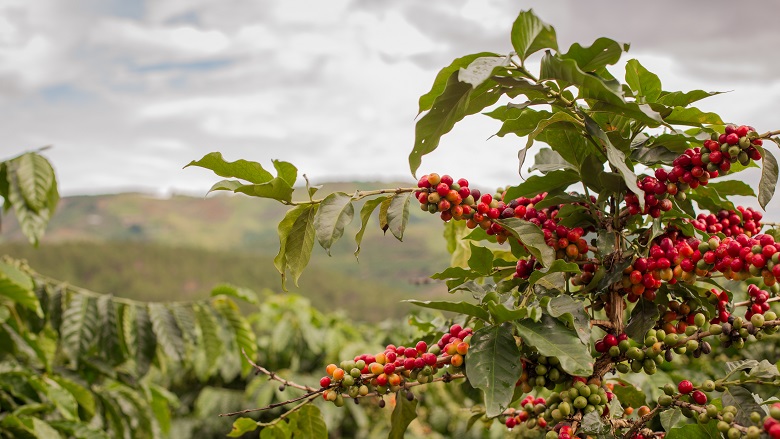
The Ethiopian taste profile
Ethiopian coffee is one of the best in the world. The country produces both washed and natural coffee, which has a unique and complex taste profile. Washed coffees tend to be spicy and citrusy with bright, flowering undertones. Natural coffee is often fruity with juicy flavor nuances like watermelon. Whatever you prefer, you can definitely find an Ethiopian coffee that you love. So next time you are looking for something new and exciting, try Ethiopian coffee. You will not be disappointed.
Kenya
Kenya is very well known as one of the best coffee producing countries when it comes to quality. Kenya is a specialty coffee giant along with some of its East African neighbors and excels in production due to the combination of highly trained producers and the perfect coffee growing environment. Kenya's coffee history begins in the 1950s, when the country began to excel in production. Since then, Kenya has become known for its high quality coffee beans, which are coveted by specialized coffee breweries around the world. Kenya's coffee-producing areas are close to the equator, providing an ideal climate for producing the highest quality coffee beans. In addition, Kenya's soil is rich in nutrients, which contributes to the superior taste of the beans. The combination of skilled producers and favorable growing conditions has made Kenya one of the world's leading producers of specialty coffee. Kenyan coffees are typically bright and vibrant with complex fruity or floral flavor nuances. These coffees are valued by espresso lovers for their ability to produce full-bodied, flavorful shots. If you're looking for a completely unique cup of coffee, be sure to find Kenyan beans the next time you visit your local specialty distillery. 
The Kenyan taste profile
Kenyan coffee is one of the best in the world. The rich, red soil of the Kenyan highlands is ideal for coffee growing and provides beans with a unique and extraordinary taste. Kenyan coffee is often light, with layers of complex berries and streaks of vinous acid wrapped in sweet fruit. It is best cooked as a poured cup, and the cup often develops as it cools. I always have a very hard time choosing anything else when I see Kenyan coffee on the filter at a cafe. The rich flavors and complex aromas are truly remarkable and I always enjoy exploring the different nuances of each cup. If you have not tried Kenyan coffee before, I highly recommend you seek it out. You will not be disappointed.Rwanda
Rwanda is a country that is fast gaining a reputation for producing high quality coffee. The country has the perfect environment for growing Arabica coffee, and the introduction of washing plants has helped to improve the quality of the beans. Rwanda's coffee industry also benefits from the younger generations receiving instruction in the cultivation and processing of coffee. The young people of Rwanda are helping to revive the country's coffee industry, and in this connection they are becoming symbols of positivity. Rwandan coffee has quickly become known for its quality and it plays a crucial role in the country's economic recovery.

The Rwandan taste profile
Rtanda is a small country in Central Africa, bordering Uganda, Tanzania and the Democratic Republic of Congo. It is often referred to as "the land of the thousand hills" and is home to a variety of ethnic groups, including Hutu, Tutsi and Twa. Rwanda's coffee industry began in the early 20th century, when Belgian missionaries planted bourbon coffee trees. Today, Rwanda is the fourth largest producer of coffee in Africa, and the country's coffee beans are known for their high quality. Rwanda has a slightly different taste profile than an Ethiopian or Kenyan coffee. What it lacks in bright citrus notes, it is compensated for with deeper, more concentrated fruit flavor nuances. It is often reminiscent of stewed apple and may have a syrupy and heavy mouthfeel. Rwandan coffee is also very diverse in taste, and a small amount of specialized Robusta coffee is also produced. The climate in Rwanda is perfect for growing coffee - there are two rainy seasons and lots of sunshine. The country's volcanic soil is also rich in minerals, which helps to produce coffee with complex taste profiles. If you are looking for an African coffee with a difference, then Rwandan coffee is definitely worth a try.Tanzania
Tanzania's history of coffee production dates back to the 16th century, when Robusta coffee was imported from Ethiopia. However, it was not until the end of the 19th century that coffee became an important export crop. Today, coffee is Tanzania's second largest export after gold. Tanzania is home to two major coffee-producing regions: the northern highlands, where Arabica coffee is produced, and the southern highlands, where Robusta coffee is produced. The majority of Tanzanian coffee is grown by small farmers who are members of cooperative laundries. These cooperatives help farmers access the resources they need to produce high quality coffee, including education and training, financing and technical support.Some of the best traceable coffees come from plantations that have their own processing plants. These coffees are often more expensive, but they have a higher quality and a more uniform taste.

The Tanzanian taste profile
Tanzania is a country with a varied landscape, and as a result, the coffee beans can vary greatly in taste. Coffee beans from the Kilimanjaro region tend to be more flowery and delicate, while coffee from the Mbeya region is often fuller and fuller. And while some coffee enthusiasts may prefer one type of coffee from Tanzania over another, there is no wrong answer when it comes to enjoying these unique and delicious breweries. Whether you are looking for a light and refreshing cup or a rich and robust blend, you can definitely find a Tanzania coffee that suits your taste. So next time you are in the mood for something new, be sure to try Tanzanian coffee. Maybe you will find your new favorite cup of coffee.
Burundi
Burundi is one of the most sought after coffee-producing countries in the world thanks to its mountainous geography and favorable climate. The country has experienced a resurgence of coffee production in recent years after years of civil war and conflict. Today, Burundi again produces almost as much coffee as it did when it was at its peak. The most common variety grown in Burundi is Bourbon, but there are other varieties as well. Thanks to the ideal growing conditions, Burundian coffee is known for its rich taste and complex aroma. If you are looking for a completely unique cup of coffee, try Burundian beans. 
The Burundian taste profile
Burundi coffee is typically very balanced with bright, juicy berry notes and a pleasant acidity. It is usually a very light coffee to drink and it does not have any of the crazy flavor profiles that some other East African coffees may have. However, this does not mean that it is not an excellent coffee - in fact, many believe that the lack of extreme flavor nuances makes it a perfect all-round coffee. Whether you are looking for an everyday coffee or something special, Burundi should definitely be on your list.Madagascar
In 1989, Madagascar's coffee industry was privatized despite the fact that the island is a socialist republic with only one party. The coffee industry was largely exempt from regulation and increased to more than 400,000 sacks of coffee annually. The coffee grown in Madagascar is primarily Robusta coffee beans of lower quality, although an increasing amount of Arabica coffee of higher quality is now grown in the country. Currently, approx. 90% of Madagascar's coffee production Arabica coffee. The privatization of the coffee industry in Madagascar led to an increase in production and a change in the type of coffee grown on the island. Although the majority of the coffee grown in Madagascar is still Robusta of lower quality, the increasing amount of higher quality Arabica coffee grown indicates that the quality of Madagascar's coffee is increasing. Thanks to privatization, Madagascar's coffee industry is booming and producing some excellent coffee for the benefit of the whole world.

The Malagasy taste profile
The current Malagasy coffee production today of approx. 90% Robusta and 10% Arabica beans. Malagasy Robusta beans have a bad reputation due to its strong, bordering on bitter taste profile. We believe this reputation is well deserved, but you should also be aware that Robusta beans are used in blends with great success. If you drink a single type of bean, Arabica is undeniably the more enjoyable experience. However, there is no need to write off Robusta completely - it can be a great way to add depth and fullness to your cup of coffee.So next time you are looking for a strong and full-bodied Robusta, bring a bag of Malagasy beans and try them!
Central America
Costa Rica
Coffee was the driving force behind much of Costa Rica's infrastructure in the early 20th century. With an incredibly rich and biologically diverse environment, Costa Rica has been at the forefront of specialty coffee for many years. The country's unique climate and soil provide some of the world's most coveted coffees.
With an abundance of water, it was no problem for Costa Ricans to wash their coffee, unlike other coffee-producing countries. Washed coffees have historically brought in a higher price as there are fewer defects and were generally always perceived as higher quality coffee. In recent years, however, natural and honey-processed coffee has become more and more popular, as it often has a more lively taste. Regardless of the processing method, Costa Rican coffee is known for its balance, complexity and sweetness.
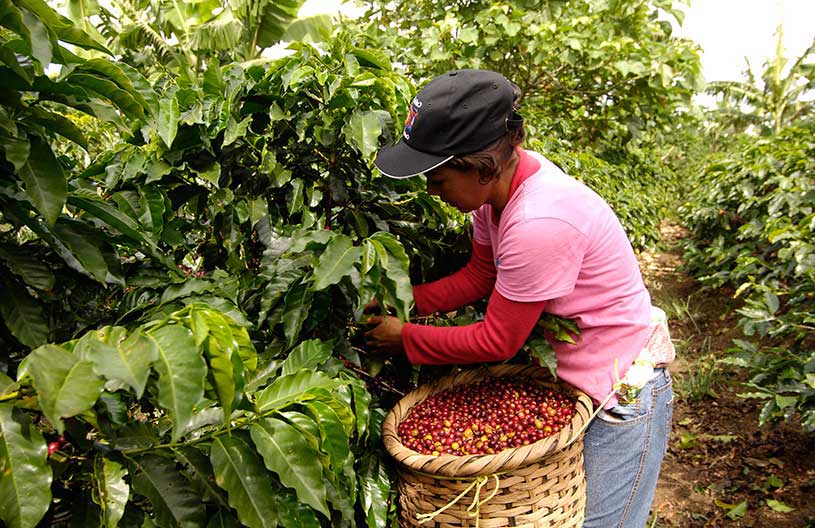
The Costa Rican taste profile
Costa Rica coffee has a soft sweetness, light in the body and clean in the cup. They are mild in acidity and often have notes of honey or molasses. Due to the traceability of many Costa Rican coffees, it is difficult to group them all as some coffees are absurdly different. That said, Costa Rica is always a coffee I keep an eye on on the menu, as it pretty much always has a unique gem. Costa Rican coffee often also has a good balance - neither under- nor over-extracted - which gives a delicious and pleasant cup. If you like coffee with milk, Costa Rica is often a good choice as the milk really highlights the sweet taste of the coffee. If you want to try something different, keep an eye out for Costa Rica coffee at your local café - you will not be disappointed!El Salvador
El Salvador is a Central American country with a long history of coffee production. In fact, the famous Pacamara variety was first cultivated in El Salvador. Despite being one of the smaller coffee-producing countries, El Salvador has always been a major player in the global coffee industry. After the Civil War of the 1980s, El Salvador undertook to continue producing top-quality coffee. While many other countries replaced unique and distinctive coffee trees with high-yielding crops, El Salvador did not undergo this process. Thanks to this commitment, El Salvador is now one of the leading producers of specialty coffee. Every year, thousands of visitors come to El Salvador to enjoy the country's world-famous coffee. And with its continued dedication to quality, there is no doubt that El Salvador will continue to be a major player in the global coffee industry for many years to come. 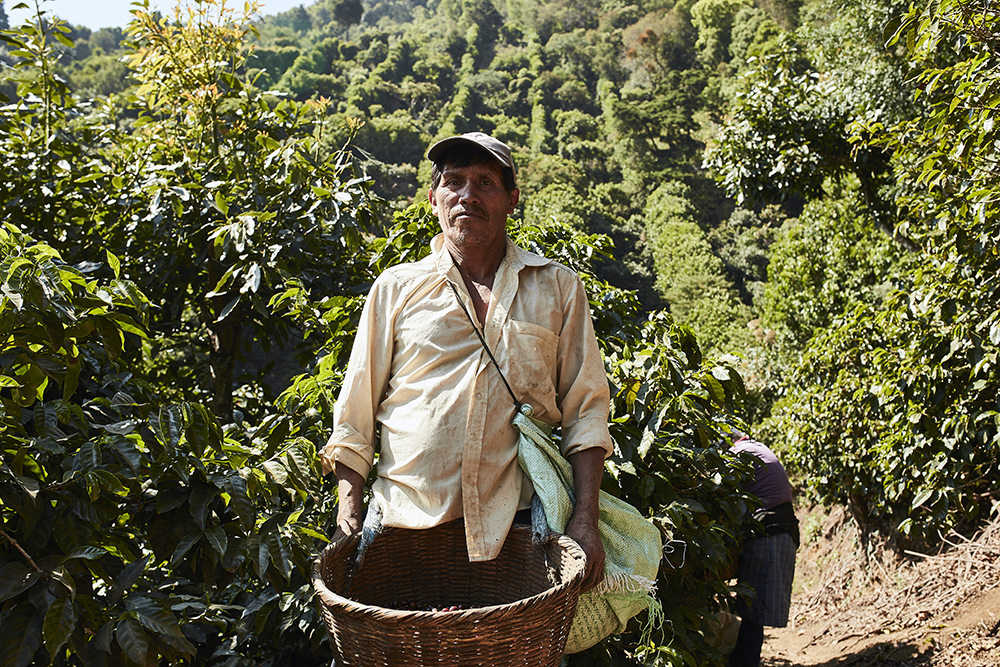
The El Salvadoran taste profile
El Salvador coffee is known for its subtle fruitiness and gentle aroma. It is a perfect everyday coffee because it does not have the powerful taste and acidity of a coffee from El Salvador. However, some people may find that it lacks depth of taste compared to other coffees from around the world. El Salvador coffee is typically medium-bodied with a moderate acidity. The most common flavor nuances are chocolate, caramel and nuts. If you're looking for a coffee that is easy to drink, El Salvador coffee is definitely worth a try.
Guatemala
Guatemala has an iconic postcard-worthy landscape that attracts people from all over the world. It just so happens that the very things that make Guatemala so unique, namely the volcanoes, also play a big role in providing rich and nutritious soil for growing coffee. The volcanic ash left behind is great for the coffee trees as the nutrients help the coffee beans develop a fuller and richer flavor. In addition, the temperature around these volcanoes is quite constant, which helps with the growth process of the coffee beans.There are four main types of Guatemalan coffee - Antigua, Fraijanes Plateau, Acatenango Valley and Coban Out of these regions, Antigua is the most popular because its ideal location and ideal weather conditions create a coffee with a unique taste that is not found anywhere else in the world. . The best thing about all of this is that you can experience these amazing coffees right in your own home! Just brewing a cup of Guatemalan coffee will transport you to this beautiful country. 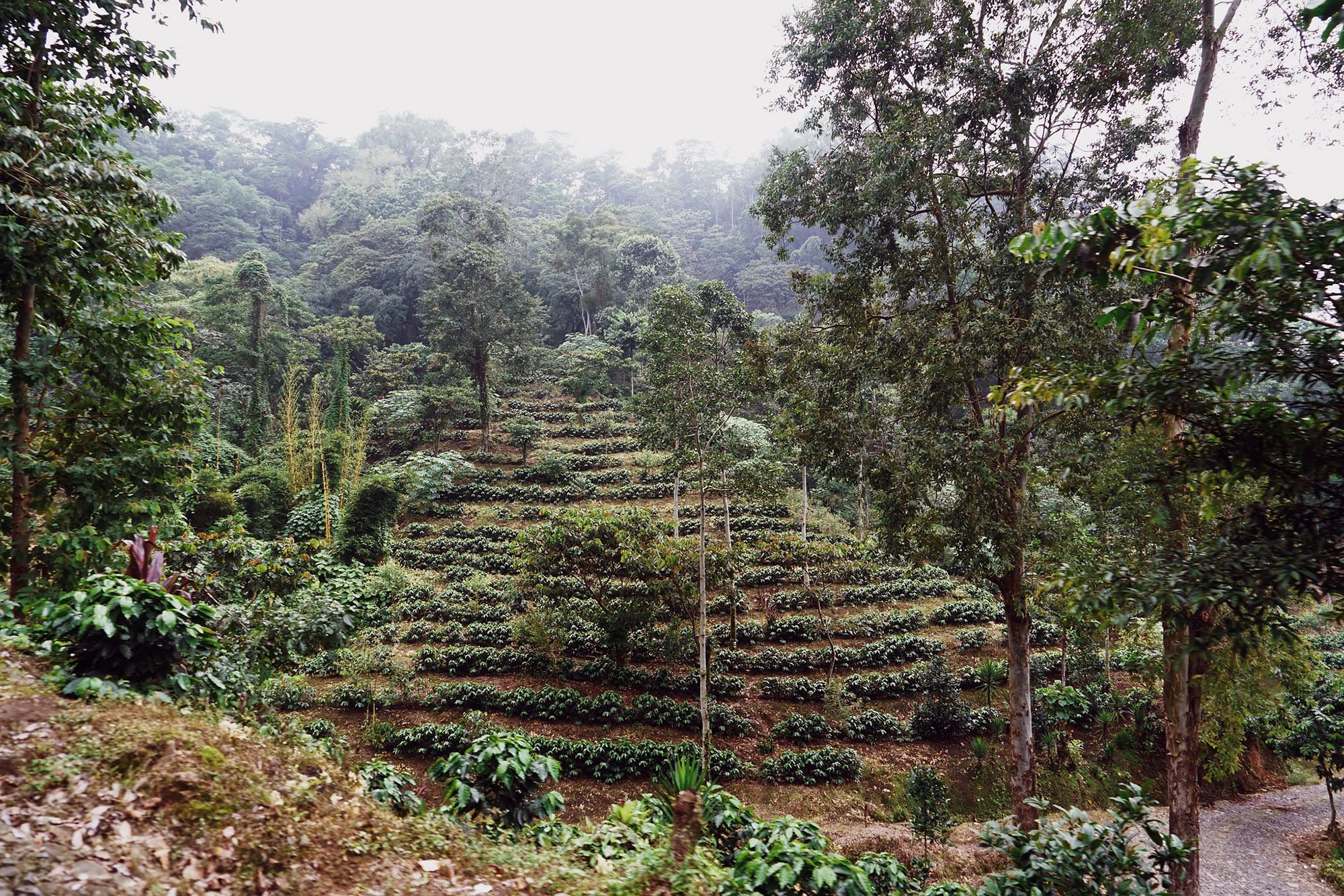
The Guatemalan taste profile
Guatemala's coffee is highly regarded in the world of specialty coffee because of the wide variety of flavors available. The taste profiles can range all the way from light floral or citrus tones to deeper, full-bodied chocolate characters. I am especially fond of Guatemalan coffees because of the wide range of flavors that are possible. Natural coffee is particularly interesting to me because Guatemala is associated with washed coffee, but naturally processed coffees have recently gained momentum. There is great potential for experimentation and innovation with Guatemalan coffees, and I believe we will continue to see exciting developments in the coming years.Honduras
Although Honduras is a relatively young player in the coffee industry, the country has quickly become a major player, producing more coffee than any other country in Central America. The warm climate and rich soils of Honduras provide ideal growing conditions for coffee trees, and the country's high altitudes allow the beans to develop a deep and complex flavor. In recent years, the Honduran government has invested heavily in the coffee industry by building new processing plants and offering training to farmers and processors. As a result, Honduras is now home to some of the best coffee in the world. With over 100,000 families involved in coffee production, Honduras' economy is increasingly dependent on this important crop.
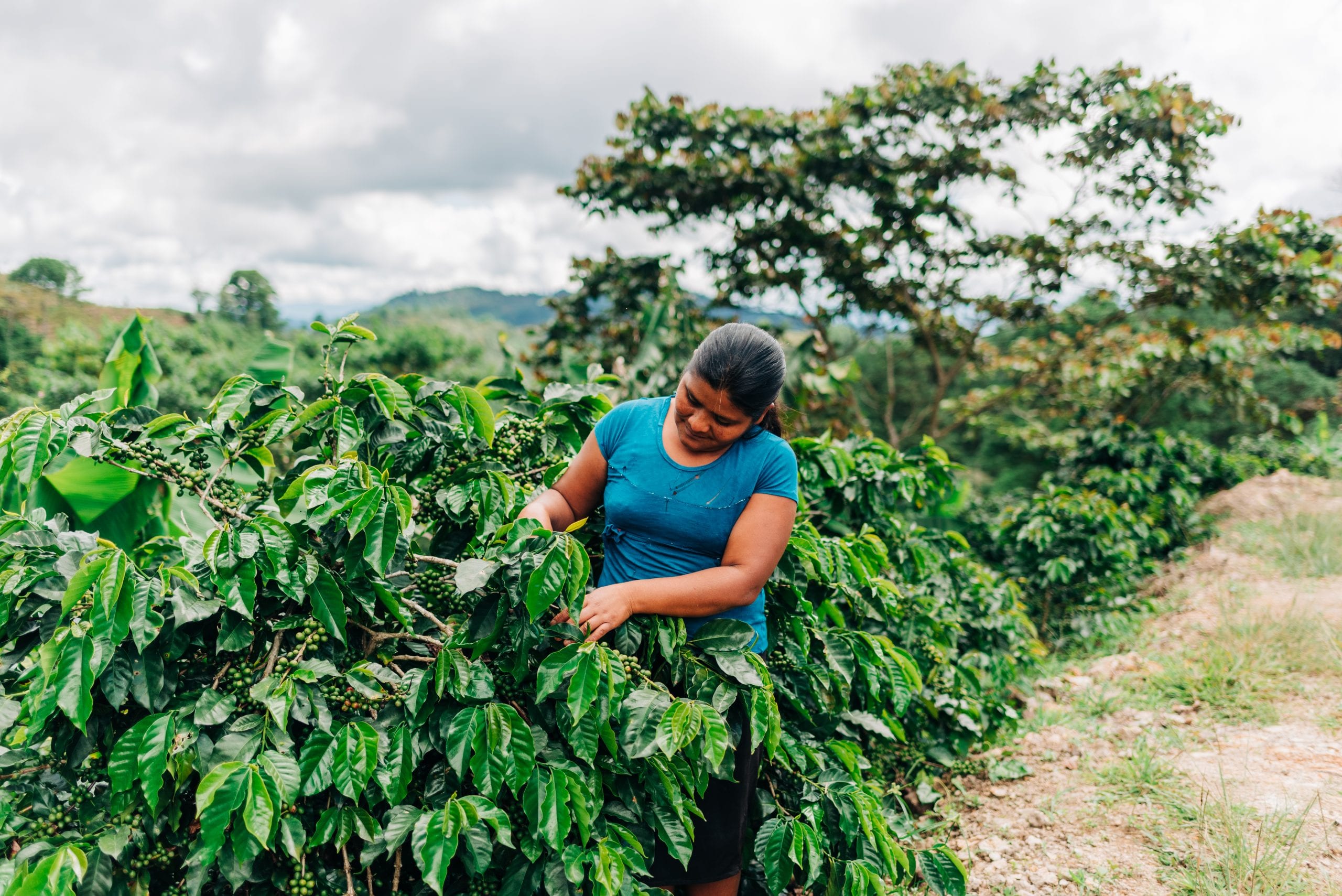
The Honduran taste profile
If you're a fan of Guatemala coffee, you'll probably like the taste profile of Honduras coffee. Honduran coffee has a wide range of flavors, from darker nut and caramel flavors to more citrusy flavors with juicy acidity. The northern forest region of Agalta produces coffees with darker flavor profiles, while the Montecillos region is known for its citrus flavors. If you're looking for a new coffee to try, Honduras coffee is a great option.
Nicaragua
Nicaragua's coffee industry has had a rather turbulent history. It has been affected by war, the economy, import bans and hurricanes to name just a few, and the coffee industry has been through a lot. Over the last 15 years, however, coffee production has begun to make a comeback and is on its way to becoming as popular as in the 19th century. As the amount of coffee produced by the coffee industry changed, so did the quality of coffee, and with more investment in infrastructure, processing and traceability improved. Much of this is due to hard-working farmers who have never given up on producing one of the world's most beloved beverages. Nicaraguan coffee is now available worldwide and has won many accolades in recent years, most recently it was named "Best Of The Best" at The World Coffee Awards 2018. This is good news, not only for those who love to drink delicious Nicaraguan coffee, but also for the farmers and their families who depend on the coffee industry for their livelihood. 
The Nicaraguan taste profile
Most of the coffee grown in Nicaragua is of the Arabian variety, which is suitable for the tropical climate of the country. The soil here is also very rich in nutrients, which helps to give the coffee beans a special taste.Nicaraguan coffees are typically lighter in body than other Central American coffees, and they often have a more fruity taste. They also tend to be quite sour, giving them a crisp and refreshing taste. Despite its relatively small size, Nicaragua produces some of the most distinctive and flavorful coffees in Central America.
Panama
Although it may not be the first country that comes to mind when you think of good coffee, Panama has become one of the most interesting and influential countries in the specialty coffee industry. In recent years, the country has produced some of the most unique and expensive coffee in the world.
Panama is a relatively small country, but it is extremely biologically diverse and has a number of microclimates in height, which contribute to a perfect environment for coffee cultivation. The country's rich history and culture also play a role in the country's coffee production. Eg. are the traditional "geisha" coffee beans named after the Panamanian district where they were first grown.
Today, Panama's coffee industry is booming and the country's coffee is in demand by specialized roasteries around the world. If you are looking for something different in your morning coffee, try Panamanian coffee. You might be surprised at how good it is.
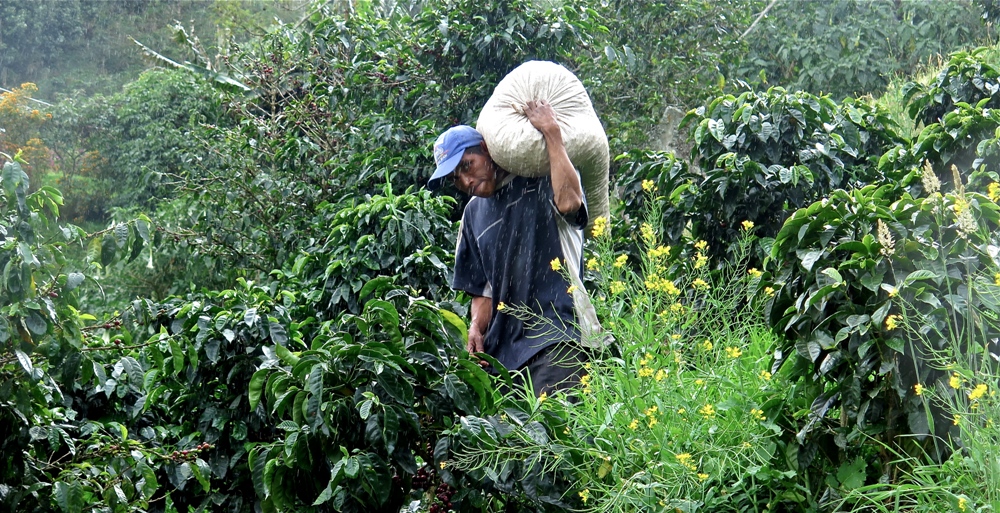
The Panamanian taste profile
As the coffee cools, the complexity and delicate flavor nuances that emerge develop completely uniquely. In addition to Gesha, Panama's origins typically produce other world-class coffees with similar flavor profiles with complex fruit and floral notes. The cooling process of the coffee allows for the full development of these aromas, and the result is a cup that is truly something very special. Gesha is not the only coffee that can achieve this level of complexity and taste, but it is certainly one of the most characteristic. When it comes to Panama coffee, Gesha is in a class of her own.
Mexico
Mexican coffee is relatively unknown on this side of the Atlantic, with most of the coffee heading north to the United States. Not much specialty coffee is produced either, and most of the coffee that leaves the country is sold as raw coffee.
However, this may change in the coming years, as Mexico has a huge amount of land that is perfect for growing high-quality specialty coffee, as well as a large workforce of well-established coffee growers. Keep an eye on this place! Although Mexican coffee may not be so well known now, it has the potential to become a major player in the specialty coffee world. With its ideal growing conditions and rich history, Mexican coffee is poised to have a big rykind in the years to come. So keep an eye out for this exciting new origin - you will not be disappointed.

The Mexican flavor profile
Mexican coffee is typically light in body with delicate flavor nuances. It is often described as having sweet chocolate notes, rather than the powerful fruit flavor nuances that are characteristic of coffees from the southern neighbors. Mexican coffee usually has a fairly high traceability, which means it can have a wide range of flavors. This may be due to factors such as the bean variety used, the region in which the coffee was grown and the manner in which it was roasted. However, all Mexican coffees have a light fullness and sweetness in common, which makes them different from other coffees from around the world. So if you are looking for a delicious coffee with a unique taste profile, try Mexican coffee.South America
Brazil
Brazil is the world's largest coffee producer and has held this title for over 150 years. There are several reasons for Brazil's dominance in the coffee market, including the climate, land mass and population. But perhaps the most important factor is the country's light exports.Brazil has a unique position to ship coffee to almost anywhere in the world, and the country's coffee beans are valued for their quality and taste
Coffee plays an important role in Brazilian culture and history. It is not just a crop or a drink, but an essential part of the country's identity. Coffee has been an important export commodity for Brazil for centuries, and it played a crucial role during the Great Depression of the 1930s. At that time, Brazil supplied 80% of the world's coffee needs. Today, Brazil continues to be a major player in the global coffee market, and the country's prayers are still highly sought after by coffee lovers around the world.

The Brazilian taste profile
Brazilian coffee is typically known to have a low acidity and sweet, nutty flavor nuances with chocolate-like notes. It is also quite inexpensive, which is why you will often find it used in espresso blends around the world. However, there is a small percentage of the unique and interesting Brazilian coffees that manage to find their way out of the country. I have had some great experiences with Brazilian natural cafes that offer intense sweetness and stone fruit flavors as well as a deep body. So the next time you review your local coffee exchange offer, do not completely rule out the Brazilian coffees - you may be surprised at what you find.
Ecuador
Ecuador is not quite as famous on the specialty coffee scene as some other South American countries, but it still has potential. Factors such as low productivity, currency conversion to the dollar and high production costs have led to a declining coffee industry in Ecuador. But with many fertile fields at desirable heights, creating more specialty coffee in Ecuador may require only a little investment. The country has a number of different microclimates that are suitable for different types of coffee trees, and the average farm size is small, making it easier to implement new technologies and methods. With a little help, the coffee industry in Ecuador can get back on its feet in no time. 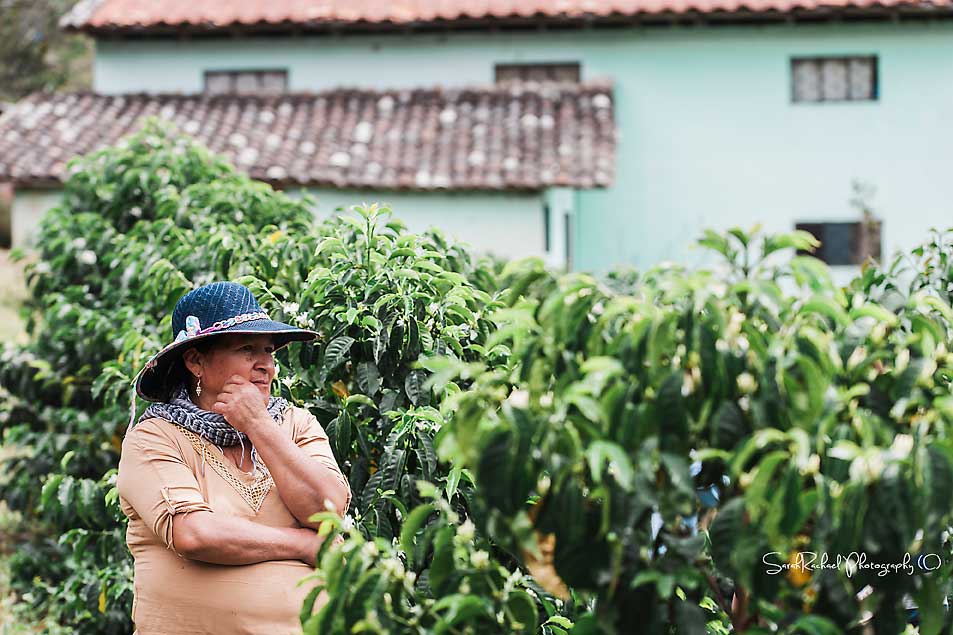
The Ecuadorian taste profile
Ecuadorian coffee is one of the best in the world. Its high quality is due to the perfect combination of factors, including the right climate, altitude and soil. The coffee beans are grown in the shade of other trees, which protects them from harsh sunlight and wind. This results in a sweeter taste and a delicate acidity. The coffee is well balanced with notes of stone fruits and occasionally floral characteristics. It is comfortable and satisfying, making it a favorite among coffee lovers. If you have not tried Ecuadorian coffee before, you are on your way to a treat!Peru
In recent years, however, the industry has made a big comeback. With the help of foreign investors, the coffee industry in Peru is now flourishing. Many different companies help finance projects that improve infrastructure and provide farmers with the necessary support. As a result, production has increased dramatically and Peruvian coffee is now enjoyed all over the world.
Peru is a country that has a lot to offer. Not only does it have some of the most amazing landscapes in the world, but it also has a rich and fascinating history. And then, of course, it is home to some of the world's best coffee. So if you are looking for an exotic and adventurous destination, Peru should definitely be at the top of your list. 
The Peruvian taste profile
Peruvian coffee is typically light in body with a mild acidity. It may be tasty and aromatic, but it does not have the same complexity as some other coffees from America. The northern region of Cajamarca has recently produced some exciting coffees. The coffee beans grown there have a balanced acidity and a pleasant sweetness thanks to the region's desirable geography and terroir.If you are looking for a new coffee to try, Peruvian coffee is a good option You may be surprised at how much you enjoy it.
Bolivia
Bolivia is a country with enormous potential to become a world-class specialty coffee producer. The country's climate, altitude and fertile soil make it an ideal place for coffee production. However, total coffee exports from Bolivia are declining every year. One of the reasons for this decline is the lack of investment in the Bolivian coffee industry. foreign investors are reluctant to invest in Bolivia due to the country's political instability. In addition, many Bolivian farmers are small farmers who do not have the resources to produce high-quality coffee. Therefore, they are not able to compete with larger, more established coffee-producing countries. Nevertheless, there is hope for the future of Bolivian coffee. The recent election of Evo Morales, Bolivia's first indigenous president, has led to increased stability and investment in the country. Morales has also promised to support smallholder farmers and help them access resources and education. With continued support from the government and the private sector, Bolivia has the potential to become a leading producer of specialty coffee.

The Bolivian taste profile
Bolivian coffee is notable for its traceability. Most coffees can be traced back to the individual farm or cooperative where they were grown. This makes for some unique coffees. Bolivian coffees are predominantly clean and sweet with a wonderful finish. Sometimes they lack a sharp acid, but they are generally well-balanced. If you are looking for something unusual and delicious, Bolivian coffee is definitely worth a try.
Colombia
Colombian coffee is one of the most popular in the world, and it has been for many years. Thanks to successful advertising campaigns in the United States in the 1950s and 1960s, Colombian coffee beans have been known as a high quality product. Today, Colombia is the third largest coffee-producing country in the world with more than two million people employed in the industry. Unlike many of its neighbors, Colombia has a large number of small coffee farmers, with 60% of all Colombian coffee producers cultivating less than one hectare of land. Therefore, Colombian coffee tends to be more expensive than other types of coffee beans, but many people think it is worth the price. If you are looking for a rich and tasty cup of coffee, you might want to try Colombian beans.
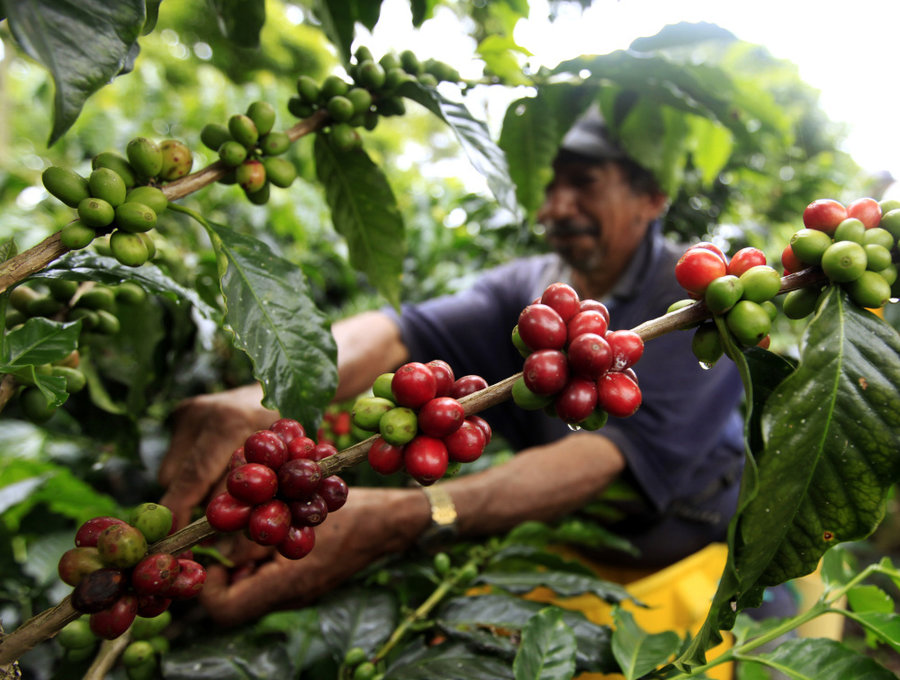
The Colombian taste profile
Colombian coffee has, as one might expect with the large number of small farmers, a wide range of different flavors and profiles to offer. From the heavier coffees traditionally marketed as high-quality Colombian coffee in the 50s, to the more delicate and complex varieties that have recently come out of Colombia. What was once known to be a chocolate-like and nutty coffee with a medium fullness has now become much more fruity with clear acidity. This is partly due to the varieties that are planted, as well as changes in the processing methods. The coffee industry in Colombia is constantly changing and evolving, and this is certainly reflected in the taste profile of coffee. The producers are constantly experimenting with different forms of processing to bring out different flavor nuances in the coffee. A manufacturer can e.g. apply a natural process that results in a coffee that is strong with a fruity taste, while another producer may apply a washed process that results in a coffee that is lighter with floral notes. It is this diversity that makes Colombian coffee so special and unique. There is something for everyone!
Caribbean
Cuba
Cuba is a country with a rich history in coffee production.For centuries, the island state has been home to some of the world's finest coffee beans, and Cuban coffee farmers have long been known for their skill. The Cuban Revolution of 1959, however, led to a mass exodus of many experienced coffee farmers, often replacing unskilled workers acquired. As a result, modern coffee production in Cuba is quite old-fashioned, with farmers still using mules and processing methods that have not changed in decades. This lack of innovation has made it difficult for Cuba to produce quality coffee in large quantities, and the country's coffee exports have fallen sharply in recent years. Despite these challenges, Cuba remains one of the world's leading coffee producers, and the country's prayers are still highly valued by discerning connoisseurs. 
The Cuban taste profile
Cuban coffee is world famous for its unique taste profile. Cuban coffee has a rich and complex taste with low acidity and is loved by coffee lovers all over the world. The key to the characteristic taste lies in the preparation: raw sugar is added to the ground beans before brewing, which gives the coffee its characteristic sweetness. Cuban coffee is typically roasted quite darkly, giving a more smoky, tobacco-like taste. Whether you enjoy a cup at home or a delicious café con leche while strolling around Havana, Cuban coffee is an unforgettable experience.Jamaica
One of the most famous coffee names in the world along with "Panama Geisha", "Java", "Juan Valdez" and the infamous "Kopi Luwak" is Jamaica Blue Mountain coffee.
Although Jamaica produces only a relatively small amount of coffee, the country has a place in the specialty coffee industry and has long had a good reputation for its quality. Until the Jamaican Coffee Board was established in the 50's, not much was known about coffee in Jamaica. The board then set out to improve the cultivation and processing methods as well as the international marketing of the coffee.
The term "Blue Mountain" simply refers to the place where coffee is grown, namely in the Blue Mountains, which form part of the Cockpit Country Range in southern and central Jamaica. The highest peak is actually called "Blue Mountain Peak" and is located just over 2,200 m above sea level. The whole area covers approx. 700 km2 and is thus one of the largest continuous coffee forests in the world! Due to its remote location and lack of good roads, agricultural practices were quite simple for many years, but this began to change from the 1950s onwards with government incentives to improve agriculture.

The Jamaican taste profile
Jamaican coffee is known for its unique taste profile. The coffee beans grown on the island tend to be sweet and creamy with a mix of subtle flavor nuances. Although Jamaican coffee is sometimes not as complex, it is always easy to drink and is a hit at the breakfast table. The popularity of Jamaican coffee has led to a boom in the island's coffee industry, and many new coffee farms have emerged in recent years. Thanks to the efforts of these farmers, Jamaica is now one of the world's leading producers of high quality coffee beans. If you are looking for a coffee that is guaranteed to please you, then Jamaican coffee is definitely worth a try.Asia
Vietnam
Vietnam is a major player in the global coffee market and produces about 20% of the world's coffee. However, the quality of the Vietnamese coffee is quite poor and the country produces very little specialty coffee. This is due to the lack of high altitude areas that are necessary to grow Arabica coffee. Therefore, Robusta coffee is predominantly grown in Vietnam (approximately 95% of production). Still, the country's huge production means it is the fifth largest producer of Arabica coffee in the world.Vietnam therefore plays an important role in the global coffee market, although the quality of the country's coffee leaves something to be desired
The Vietnamese taste profile
Vietnamese coffee is known for its powerful taste and full-bodied body. If you are lucky enough to find specialized Vietnamese coffee, you can expect a cup with notes of chocolate, sweet tobacco and figs. Coffee is grown in the central highlands of Vietnam, where the climate is perfect for producing rich, flavorful beans. The coffee is typically brewed using a phin, a traditional Vietnamese brewing method that involves dripping hot water over ground coffee. This slow brewing process results in a cup of coffee that is intensely flavorful and perfectly balanced. Whether you are a coffee lover or just looking for a great cup of coffee, Vietnamese coffee will surely please you.
India
India is the sixth largest coffee producer in the world. With coffee plantations all over the country, from the southern tip of Kerala to the foothills of the Himalayan mountains in the north, India is truly a land of plenty of coffee when it comes to this beloved beverage. Although Arabica coffee is still produced, the majority of the coffee grown in India is Robusta coffee. Although many specialized coffee roasters today have gone away from espresso blends with Robusta coffee, there is still a large market at the top end of Robusta production, of which India is primarily represented. The Indian coffee industry is also unique because it has a very large number of small producers, with an estimated half a million farms each producing less than 500 kg per year. This abundance of home-grown coffee combined with India's long history of cultivation and trade makes it clear that this nation takes its java seriously. Next time you enjoy a cup of Indian coffee, take a moment to appreciate all the hard work that goes into making it possible.
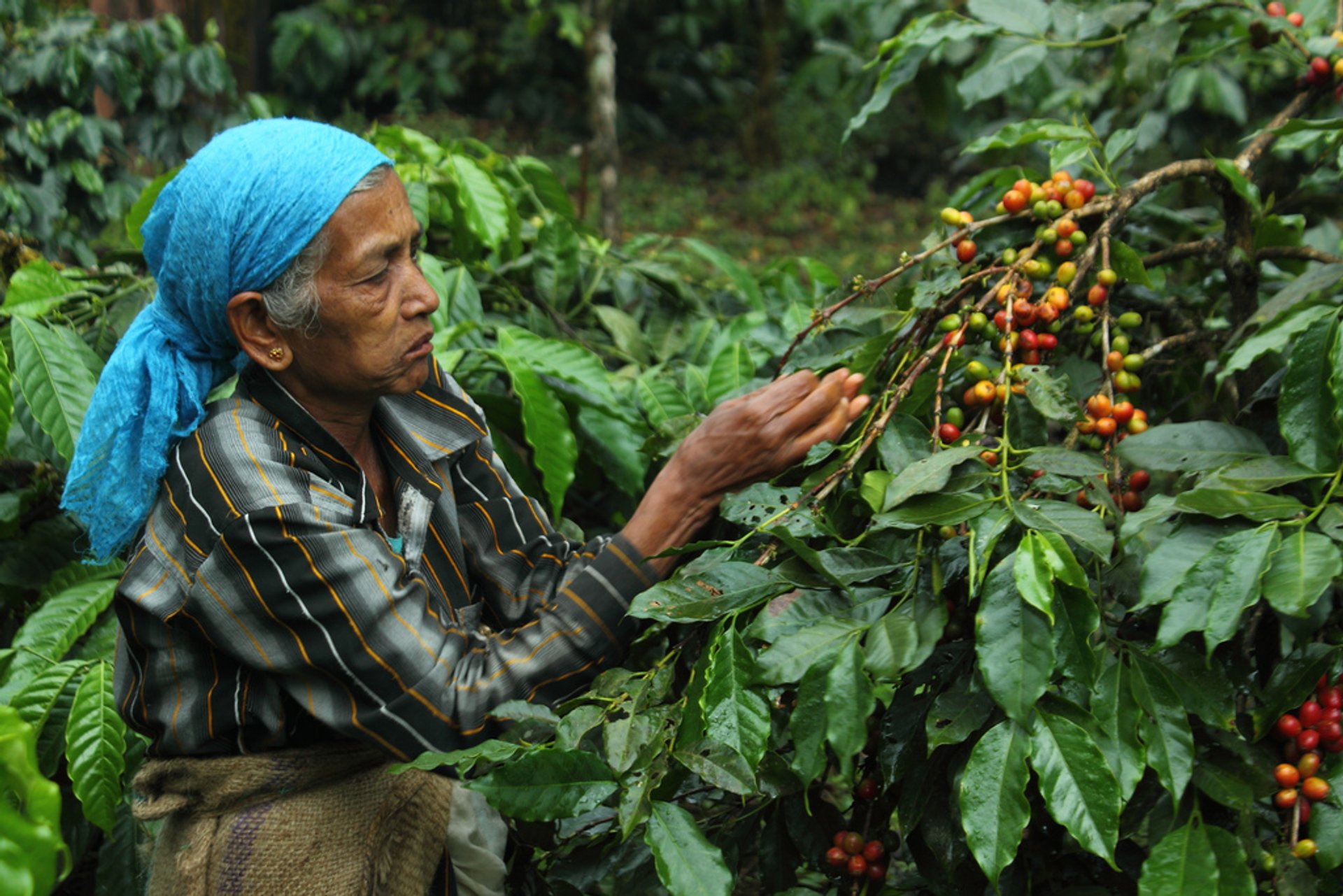
The Indian taste profile
Indian coffee is full of fullness and depth. Many roasteries use it to give espresso blends more fullness and weight. With low acidity and low complexity, it seems like the opposite end of the spectrum compared to many specialty coffees, but it is still very popular with people who appreciate a fuller coffee with smoky and earthy flavor nuances. Indian coffee is grown at great heights, which helps to give it its characteristic fullness and depth. The beans are also roasted longer than many other coffees, which contributes to the smoky taste. If you are looking for a coffee with lots of substance, then Indian coffee is definitely worth a try. You might be surprised at how much you enjoy it.
Thailand
Thailand is one of the newer kids on the specialty coffee scene, but it has made a big rykind in recent years and is seen as a very exciting origin for the future of the industry. Thailand is an extremely progressive country and it is one of the few countries that grows specialty coffee and which has a vibrant scene for the consumption of specialty coffee. This has helped the industry in Thailand by encouraging farmers to produce higher quality coffee as they can see the end product and actually become consumers themselves. This close connection between growers and consumers is something that is completely unique to Thailand, and it is one of the things that makes the country's specialty coffee scene so special. we can not wait to see what the coming years will bring for Thai coffee!

The Thai taste profile
Every year, the Thai coffee beans work hard to produce beans that are delicious and full of flavor. Fortunately, their efforts can be traced to the exact farm because most farmers own micro-mills. This allows the subtle flavor nuances of the coffees to shine through, instead of being drowned out by more daring notes.As a result, Thai coffee typically has a bubbly acidity, a balanced chocolate-like sweetness and hints of nuts. So the next time you are in the mood for a delicious cup of coffee, be sure to choose coffee from Thailand.
Indonesia
Indonesia is the fourth largest coffee exporter in the world. Indonesian coffee is distributed on the many islands that make up this diverse country and the coffee has an interesting history. Like its South American counterparts, it started as an industry that nourished the colonizers. Hundreds of years later, some of the world's most beloved and famous coffees are now produced. Indonesian coffee is characterized by its rich, full-bodied body and low acidity. Many of the country's most famous coffees come from the island of Sumatra, where they are grown in the shade of tropical rainforests. These conditions create a unique taste profile that is appreciated by deep L lovers all over the world. Java is another island with a long history of coffee production. The island's naming coffee, Java, is one of the most iconic and beloved coffees in the world. While Indonesia may not be as synonymous with coffee as Brazil or Colombia, it is nonetheless a major player in the global coffee market. 
The Indonesian taste profile
If you're a fan of blended coffee, there's a good chance Sumatra has found its way to your cup at some point. This Indonesian island is known for producing beans with a distinctive taste profile that can add depth and fullness to a mix. Sumatra coffee tends to be semi-washed (also called pulped natural), which means that the fruit around the bean is removed before undergoing fermentation. This process results in a coffee that often has a sweetness with notes of dried fruit and a deep fullness. If you are looking for an Indonesian coffee with traceability back to the exact farm, there are a few that fit into the picture. And while these coffees may not have the same sugary sweetness as their half-washed counterparts, they can still provide a pleasant cup of coffee.
Papua New Guinea

The Papua New Guinean Taste Profile
Coffee from Papua New Guinea often has a complex taste profile that appeals to coffee lovers. The unique combination of factors that contribute to the taste of coffee from Papua New Guinea includes the climate, the soil and the altitude at which the coffee is grown. In addition, the traditional methods used to process the coffee beans also play a role in shaping the final flavor profile.When these factors come together, they create a coffee with a pure taste that has a buttery sweetness and often floral notes. These flavor nuances can eventually develop into more juicy fruit notes, making Papua New Guinea coffee an impressive choice for them. who want to impress their friends with a unique and delicious cup of coffee.
China
It is about a century ago that a French priest began cultivating coffee in the Yunnan Valley of China, bordering Vietnam, Myanmar and Laos. The Yunnan region has heights and a climate suitable for coffee production. The first major coffee production in China began in 1998, when the Chinese government, in cooperation with the World Bank and the United Nations, began growing 4,000 hectares of coffee. In 2003, Starbucks opened its first store in Beijing, which helped stimulate domestic coffee demand. Since then, coffee production in China has grown rapidly, reaching 140,000 hectares in 2018. Although China still accounts for a relatively small share of global coffee production, the country is now the sixth largest coffee producer in the world. And with continued growth in domestic demand, the country is poised to become an even more important player in the global coffee market in the coming years. So be sure to keep an eye out for the rising star in China's coffee industry. Who knows, maybe one day your morning coffee will come from the Far East!

The Chinese taste profile
China coffee has long been overshadowed by its more famous counterpart, tea. However, the quality of China's coffee beans has improved markedly in the last decade and may soon play an important role in the specialty coffee market. Chinese coffee generally has a light to medium fullness with a relatively mild acidity and a pure taste. Some have even compared it to wet-treated South American coffee. With its growing popularity, China coffee is slowly but surely making its claim as a cup of coffee of the highest quality. So next time you need a change, give China Coffee a try. You may be pleasantly surprised.Philippines
The history of coffee in the Philippines is long and interesting. Coffee production in the country began in 1740, when the Spaniards introduced the crop to the islands. For many years, coffee was an important industry in the Philippines, and at one point the country was ranked as the fourth largest coffee producer in the world. Over time, however, production has declined, and in 2014, the Philippines was in 110th place relative to production. Despite this decline, coffee is still an important part of Filipino culture. The local demand for coffee is great, as 100,000 tonnes of coffee are consumed every year. And while other countries focus on producing only one or two types of coffee, the Philippines is one of the few countries that produces four of the most important viable coffees: Arabica, Liberica (Barako), Excelsa and Robusta. Therefore, coffee is an important part of the Philippine economy and culture despite the declining production.

The Philippine taste profile
If you've into strong coffee, you'll love Barako beans. These beans are the local version of the Liberica coffee in the Philippines, and they have a distinctive, intense flavor. Barako beans are bitter, chocolatey and fruity, making them perfect for strong deep L lovers. This variety often comes from the southern Tagalog region of the Philippines and is well worth a visit if you are looking for a great cup of coffee. So next time you're in the mood for a strong cup of coffee, be sure to give Barako the beans a try.
Hawaii
While this may come as a surprise to some, Hawaii is the only coffee-producing state in the United States. And while Hawaiian coffee beans account for only a small portion of the global coffee market, the state's coffee industry is booming.Thanks to its unique location and climate, Hawaii is home to some of the world's most coveted coffee beans. And with a growing focus on quality over quantity, Hawaiian coffee beans are able to take a premium for their beans. While most coffee is grown in developing countries, Hawaiian coffee farmers can take advantage of the state's tourist trade by selling their coffee directly to visitors. As a result, coffee from Hawaii is often quite expensive. But for coffee lovers, it's worth every penny. Thanks to its unique taste and history, Hawaiian coffee is truly like no other.

The Hawaiian taste profile
Hawaiian coffee is unique in its rarity. The coffee grown in the United States typically has a low acidity and lacks complexity. It has a medium body with a satisfying sweetness. However, due to its rarity, Hawaiian coffee is often more expensive than other types of coffee. Despite the higher price, Hawaii coffee is usually quite pleasant and pleasant. One of the positive aspects of coffee grown in the United States is that it can be traced down to the farm, so that the subtleties of coffee are more clearly expressed. Therefore, Hawaiian coffee is typically a good choice for those who want to enjoy a rare and unusual type of coffee.How can you find coffees that suit your taste preferences?
When it comes to coffee, there are many different options to choose from. If you are not sure where to start, it is best to find out what flavors you like. Do you prefer something dark and full or something light and fruity? Once you have an idea of what types of flavors you like, you can start narrowing down your choices. If you still feel overwhelmed, ask your local barista for recommendations. They will be able to guide you to coffees that suit your taste preferences. And if all else fails, just experiment until you find something you like! There is no wrong way to enjoy coffee.
.






